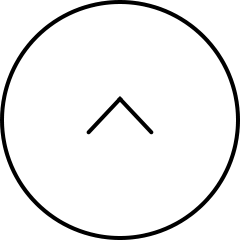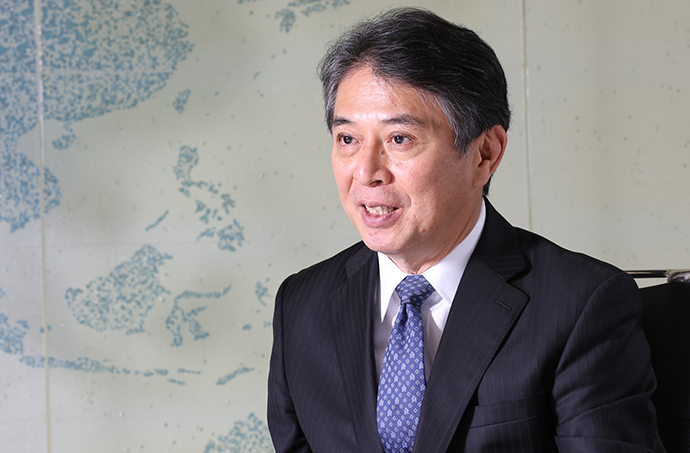
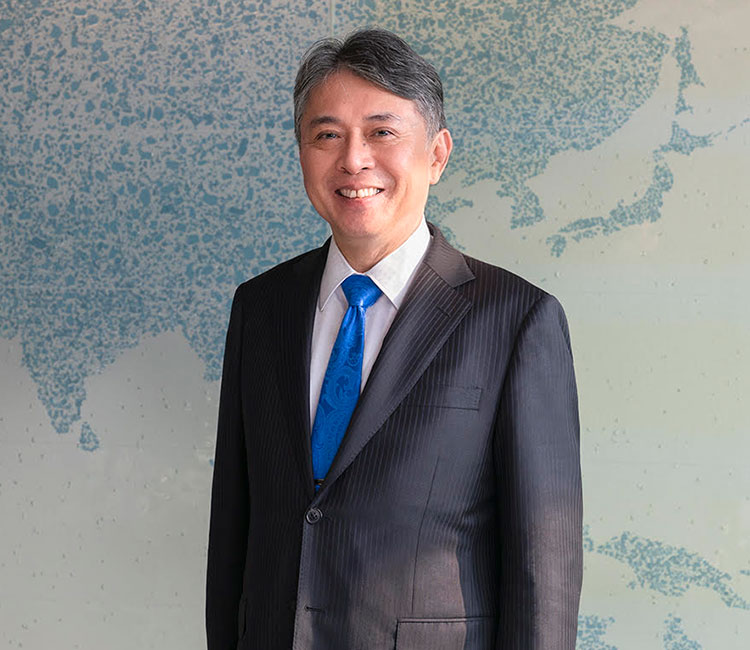
Rising to the Challenge
- #Management Strategies
- #Spirit
Profile
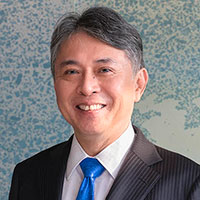
Yoshinori Hirai
Representative Director, President, and CEO AGC Inc.
1987 Ph.D., Graduate School of Engineering, The University of Tokyo. In 2008, he became the vice president of (then) Optrex, a subsidiary that manufactured liquid crystal panels, and in 2011, he became the general manager of AGC’s business development office. After serving as CTO in 2016, he assumed his current position in January 2021. He teaches several times a year as a visiting professor at Kyoto University. When he was a student, he wanted to be a physicist. He is a native of Fukui Prefecture.
As a world-leading manufacturer of high-tech materials, such as glass, chemicals, electronics, and life science products, AGC Inc. retains the bold, innovative spirit of its founder after more than a century.
At a time when few Japanese entrepreneurs ventured abroad, AGC Inc. founder Toshiya Iwasaki took a risk and went to London to study chemical engineering. With his learnings, in 1907, he founded AGC in order to mass-produce architectural flat glass—the first of such manufacturing in Japan. “Many other Japanese companies had tried and failed,” says Yoshinori Hirai, AGC president and CEO. “From the start, AGC has been about tackling difficult challenges.” Since then, the company has become a key supplier of innovative materials to global industries with annual sales of 2 trillion yen (approximately $14.4 billion).
After opening a factory in India in 1956, AGC started expanding its operations through acquisitions in Europe and the U.S. in the 1980s. Currently, 70% of AGC’s sales come from international markets, and 80% of its employees work outside of Japan. “Thanks to our history of diversification and globalization, we have a presence in multiple business areas—automotive, architecture, electronics, chemicals, ceramics, and life science—at global scale,” says Hirai.
Since 2016, AGC has been further transformed by its pursuit of the ambidextrous organization, which involves improving the profitability of existing core businesses—architectural and automotive glass, displays, and essential chemicals—while also developing new strategic businesses in high-growth fields, such as mobility, electronics, and life science. Today, the firm’s three strategic businesses account for 40% of its operating profits.
AGC already has a world-leading market share in conventional automotive glass. Now, as the growing popularity of electric vehicles and autonomous driving technology promotes change, the company has entered the broader mobility sector. In addition to being a major provider of in-vehicle displays, it now produces numerous optical glass components for the light detection and ranging sensors powering the mobility revolution. And recently, AGC developed window-mounted 5G glass antennas capable of handling the large volumes of location information that autonomous cars send and receive.
The organization’s electronics business, designated as its second strategic business, took off in 2010, when smartphone makers began using the optical filters AGC once supplied for conventional cameras. But recently, semiconductors have become a leading growth engine in this area. Additional AGC products include a chemical mechanical planarization (CMP) slurry, an abrasive used to polish silicon wafers, and extreme ultraviolet lithography (EUVL) mask blanks, a key component in next-generation semiconductor production. AGC is one of only two manufacturers capable of making EUVL mask blanks, and with mass-production ramping up, the business is growing at 40% annually. “Chips with a five-nanometer pattern size are currently seen as the cutting edge; we are bringing that down to two or three. That’s extremely complicated and difficult,” says Hirai.
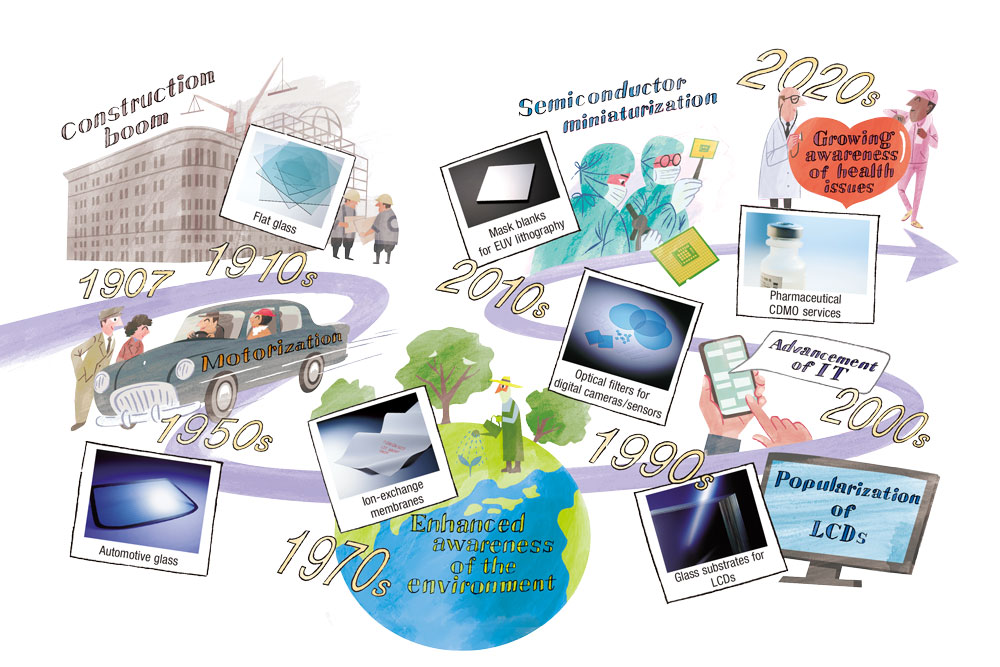
The history of AGC Inc.
Similar structural shifts are supercharging life science, AGC’s third strategic business. As big pharmaceutical companies opt to concentrate on research, drug discovery, and sales, outsourcing process development and manufacturing has become increasingly common. Sensing opportunity, in 2016, AGC launched a rapid-fire string of acquisitions to expand its contract developing and manufacturing business from Japan into the bigger markets of Europe and the U.S. It can now offer the same high-quality, leading-edge technologies across all sectors. “From the CEO down, we’re totally committed to developing new businesses,” says Hirai.
On the other side of the ambidextrous organization drive, AGC’s core businesses are thriving. Urbanization is driving significant demand for the polyvinyl chloride (PVC) used in water supply and sewage systems, as well as for caustic soda, which is used in many basic processes from aluminum refining to papermaking. “In chlor-alkali products, with our 50%-plus market share in Southeast Asia, we’re helping drive the region’s development,” notes Hirai.
Still, it’s AGC’s people-first culture that continues to drive its success. The firm upskills its employees through internal training programs and the recruitment of experienced, mid-career hires, then actively encourages them to tackle—and, crucially, follow through on—challenges.
“Our slogan, ‘Your dreams, our challenge,’ sums up what AGC is about,” says Hirai. “As a company, we have always been committed to growing and evolving in order to tackle any challenge that makes people’s lives better.”
This was made in partnership with Fortune Brand Studio
